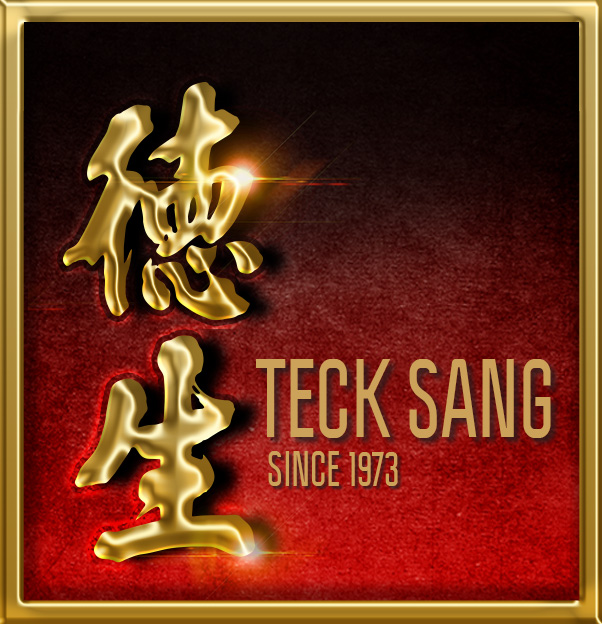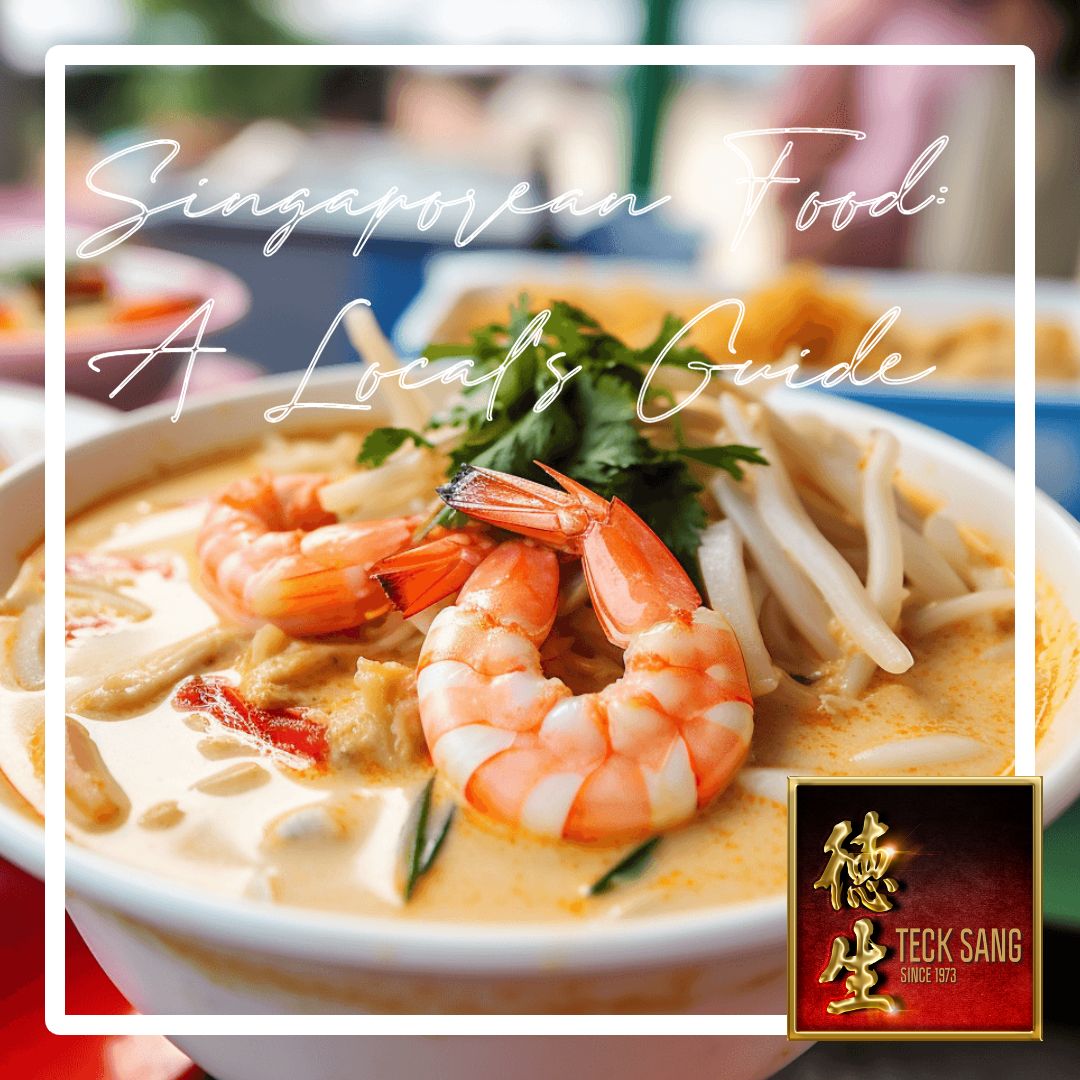Singaporean Cuisine: A Comprehensive Guide To Local And Traditional Food in Singapore
Are you a foodie looking to explore the vibrant and diverse world of Singaporean cuisine? Look no further than this comprehensive guide to local and traditional dishes!
Singaporean cuisine is a unique blend of Chinese, Malay, Indian, and Western influences that have evolved over centuries. From humble hawker centers to Michelin-starred restaurants, there is something for everyone in this food lover's paradise.
In this article, we will take you on a culinary journey through the history and evolution of Singaporean cuisine. We will introduce you to must-try local dishes that reflect the country's multicultural heritage, as well as popular traditional dishes and their ingredients.
Whether you're a seasoned traveler or new to Singaporean cuisine, our tips for exploring the city's food culture will help you make the most of your dining experiences.
So put on your stretchy pants and get ready to indulge in some delicious eats!
Tracing the Evolution of Singaporean Food Culture: A Historical Perspective
The multicultural influences on Singapore food can be traced back to its founding days, with Chinese, Malay, and Indian influences playing a significant role. In the earlier days, Singapore was a colonial outpost and trading hub in South-East Asia. Most of the food and eating habits came from the intermingling of different cultures.
Many of these dishes were developed by street vendors who sold them from their carts or stalls, which eventually led to the establishment of hawker centers - open-air food courts that have become an integral part of Singapore's food culture. Upon independence, it became part of the shared vision to ensure everyone can afford food. It led to many Hawker Centers are built within close proximity of workplaces and homes; each with dozens of stalls located in each complex offering their own specialty hawker food.
These centers offer a wide variety of ingredients used in Singaporean cuisine such as coconut milk, spices, bold flavors, and seafood. It is through this rich culinary history that many must-try local dishes have been created.
Embracing Singapore: Why You'll Love Singaporean Dishes and Their Unique Ingredients
If you're looking for a taste of Singapore's culinary scene, be sure to try the mouth-watering Chicken Rice, the rich and spicy Laksa soup, or the savory Fried Carrot Cake. These local dishes in Singapore are just a few examples of the wide variety of traditional dishes that can be found at hawker centers all over the city. If you're not a fan of spicy food, there are plenty of non-spicy Singaporean dishes to choose from as well.
Here are some other must-try local dishes in Singapore:
- Nasi Lemak: This coconut rice dish is typically served with fried chicken or fish, peanuts, anchovies, and sambal chili sauce.
- Singapore Red Chili Crab (or Black Pepper Crab): Singapore Red Chili Crab is a popular seafood dish in Singapore, which is made with freshly caught mud crabs, stir-fried in red chili gravy. The dish is usually served with steamed white rice, vegetables and typically eaten with your hands.
- Hainanese Chicken Rice: A popular lunch dish of steamed chicken and seasoned rice, served with chilli and soy sauce and usually with cucumber garnishes
- Char Kway Teow: A stir-fried noodle dish made with flat rice noodles, eggs, bean sprouts, and Chinese sausage.
- Singaporean Laksa: A Spicy noodle dish that consists of a coconut soup or broth with toppings such as chicken, prawn or fish.
- Rojak: A fruit salad dish with pineapple, cucumber, turnip and bean sprouts mixed together with shrimp paste dressing.
- Bakuteh: A comforting Singaporean dish consisting of pork ribs simmered in a complex broth of herbs and spices, often served with rice, tea, and various side dishes
These traditional dishes offer a glimpse into Singaporean cuisine and its diverse influences.
Now let's explore some popular traditional dishes and their ingredients.
The Secret Behind Singaporean Cuisine: Unraveling Its Unique Ingredients and Recipes
What makes food uniquely Singaporean? It's their ingredients! If you want to know what gives that unique sensation or flavour, let us guide you through the different ingredients across each different sub-culture of food.
Sure, here's a detailed list of common ingredients used in the various cuisines in Singapore:
Peranakan-Malay Cuisine
| Buah Keluak (Black Nuts) |
| Tamarind |
| Lemongrass |
| Belacan (Shrimp Paste) |
| Palm Sugar |
| Assam (Tamarind) Paste |
| Dried Shrimps |
| Galangal |
| Kaffir Lime Leaves |
| Tumeric |
| Padan Leaves |
| Sambal Oelek |
| Candlenuts |
| Rempah (Spice Paste) |
| Curry Powder |
Indian Cuisine
| Tumeric |
| Cumin Seeds |
| Ghee (Clarified Butter) |
| Mustard Seeds |
|
Garam Masala |
| Coriander |
| Curry Leaves |
| Cardamom |
| Fenugreek |
| Basmati Rice |
Chinese Cuisine
| Noodles (Rice Noodles, Egg-Based Noodles) |
| Fish Sauce |
|
Oyster Sauce |
| Bok Choy |
| Lap Cheong (Chinese Sausage) |
| Chilli |
| Ginger |
|
Soy Sauce |
A Food Tour in Singapore: The Best Places to Eat and Explore Local Food
Immerse yourself in the vibrant and diverse food culture of Singapore by discovering where to find the best dishes that showcase a fusion of flavors influenced by various cultures.
Hawker centers are the go-to places for authentic and affordable Singaporean cuisine. These open-air food courts feature dozens of stalls offering a variety of dishes, making it easy to sample different types of food in one place. Some well-known hawker centers among tourists include Telok Ayer Market, Maxwell Food Center, Lau Pa Sat, and Newton Food Centre.
For those seeking a more upscale dining experience, there are also plenty of restaurants serving traditional Singaporean dishes as well as fusion cuisine. Look out for establishments with Michelin stars or Bib Gourmand ratings for an exceptional meal.
No matter where you choose to dine, be prepared to experience bold flavors and unique combinations that'll leave your taste buds wanting more.
Now that you know where to find the best dishes, let's explore some tips for diving deeper into Singaporean cuisine.
Top Tips for Savouring the Best Food in Singapore: Your Guide to Local Dishes, Rice and Noodle Delights, and Singaporean Desserts
Ready to dive deeper into the vibrant and diverse food culture of Singapore? Check out these tips for getting the most out of your culinary adventure.
First, don't be afraid to try new things! Singaporean cuisine offers a wide range of flavors and ingredients that may be unfamiliar to you, but this is part of what makes it so exciting. Be open-minded and willing to step outside your comfort zone – you never know what delicious surprises await!
Secondly, take advantage of local knowledge. Ask locals for their favorite hawker centers or street food stalls, and don't hesitate to strike up a conversation with fellow diners about their favorite dishes. You may discover hidden gems that aren't listed in guidebooks or on popular food blogs.
Additionally, consider taking a food tour or cooking class led by a local expert – not only will you learn more about Singaporean cuisine, but you'll also get an insider's perspective on the city's history and culture.
With these tips in mind, get ready to embark on a culinary journey through one of the world's most exciting food destinations!
Frequently Asked Questions
How has Singaporean cuisine been influenced by the country's geography?
If you're curious about how Singaporean cuisine has been influenced by the country's geography, you'll be fascinated to learn that this small island nation's location at the crossroads of Southeast Asia has played a major role in shaping its food culture.
With Chinese, Malay, Indian and Western influences all converging here over the years, Singaporean cuisine is a delicious blend of flavors and ingredients from all over the world.
From seafood dishes like chilli crab and black pepper crab to popular street foods like ice cream sandwiches on bread or wafers, Singaporean cuisine offers something for everyone.
And with hawker centers serving up affordable and authentic local dishes around every corner, exploring Singaporean food culture is an adventure you won't want to miss!
What are some popular tropical fruits in Singapore besides durian?
If you're looking to explore the tropical fruits of Singapore, durian may be the first one that comes to mind, but there are plenty of other delicious options to try.
- Mangosteen, a sweet and tangy fruit with a purple exterior and white flesh.
- Jackfruit is another popular choice, known for its large size and sweet flavor.
- Pineapple is also widely available and makes for a refreshing snack on a hot day.
And if you're feeling adventurous, give rambutan a try - this spiky red fruit has a soft interior that tastes similar to lychee.
With so many tasty options to choose from, you're sure to find a new favorite among Singapore's tropical fruits.
What role did Hainanese immigrants play in the development of Singaporean cuisine?
If you're curious about the origins of Singaporean cuisine, you'll be interested to know that Hainanese immigrants played a significant role in its development. These immigrants brought with them their own culinary traditions and techniques, which blended with those of other cultures to create the unique blend of flavors found in Singaporean dishes today.
From Hainanese chicken rice to seafood delights like chili crab and black pepper crab, these dishes are a testament to the rich history and cultural diversity of Singapore's food scene. So next time you're exploring local cuisine, keep an eye out for the influence of Hainanese immigrants in your meal!
What are some cross-cultural dishes in Singaporean cuisine?
If you're looking for unique and flavorful dishes that blend different cultures, Singaporean cuisine has plenty of cross-cultural options to try. Some popular examples include lap cheong pasta, fish head curry, and kueh pie tee.
These dishes showcase the melding of Chinese, Malay, and Indian influences in Singapore's food scene. With so many delicious fusion creations available at hawker centers and restaurants throughout the city-state, there are endless opportunities to explore new flavors and combinations in Singaporean cuisine.
How does the government regulate food safety and hygiene standards in hawker centers?
If you're curious about how Singapore's hawker centers maintain their reputation for delicious and safe food, you'll be happy to know that the government takes food safety very seriously.
The National Environment Agency (NEA) regulates over 100 hawker centers in Singapore, ensuring that each stall adheres to strict hygiene standards. NEA provides regular inspections of food stalls, with a focus on preventing cross-contamination and proper disposal of waste. They also require all food handlers to complete a basic food hygiene course.
So when you visit one of Singapore's famous hawker centers, rest assured that your meal has been prepared with care and attention to safety!
Conclusion
Congratulations! You've just completed a comprehensive guide to exploring Singaporean cuisine.
By now, you should have a good understanding of the history and evolution of Singaporean cuisine, as well as the cultural significance of hawker centers in Singapore's food culture.
You've also discovered some must-try local dishes and popular traditional dishes with their ingredients.
With this knowledge, you're now equipped to explore the diverse world of Singaporean cuisine and find the best places to try these delicious dishes.
So go ahead, grab your chopsticks or fork and spoon, and embark on a culinary journey through Singapore's vibrant food scene. Happy eating!



